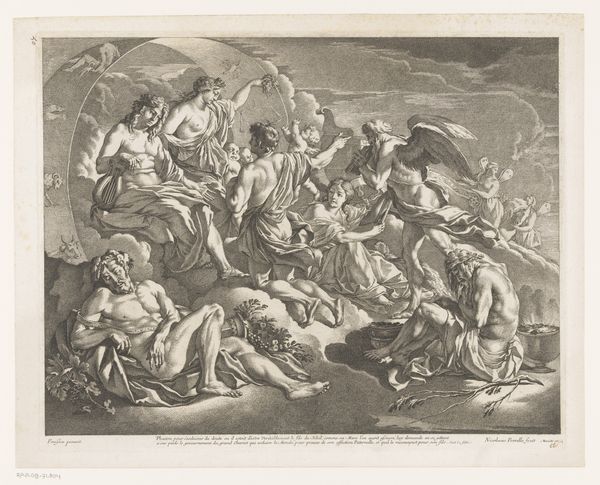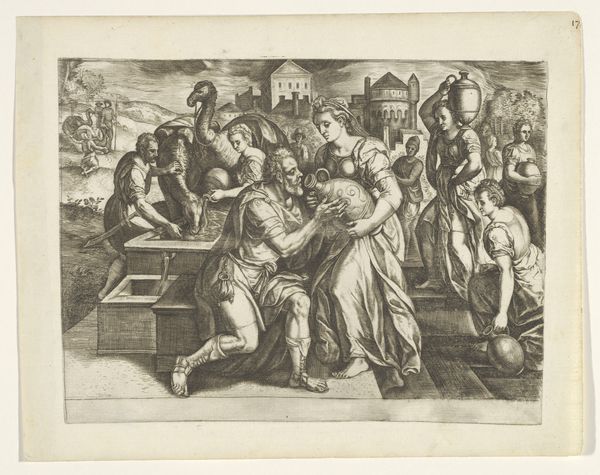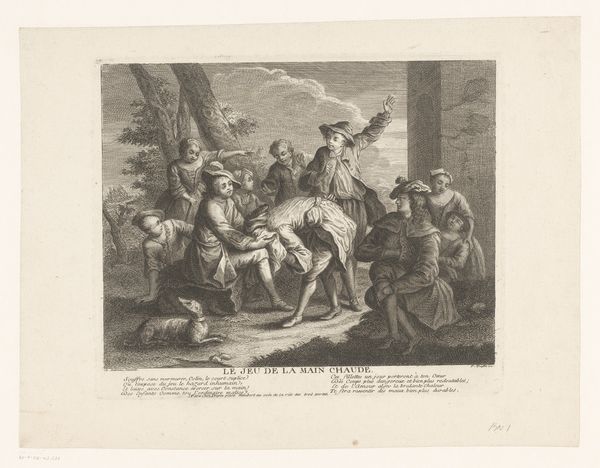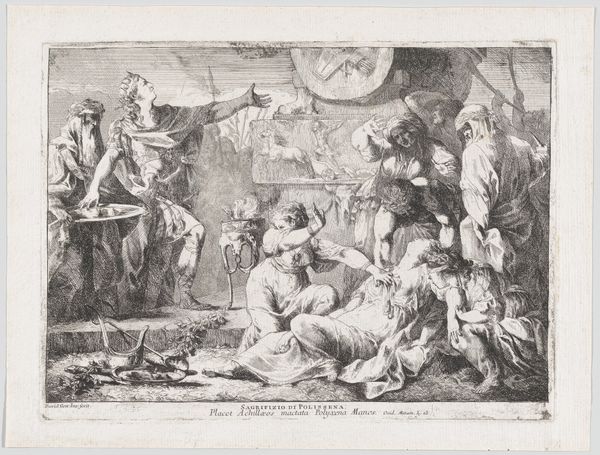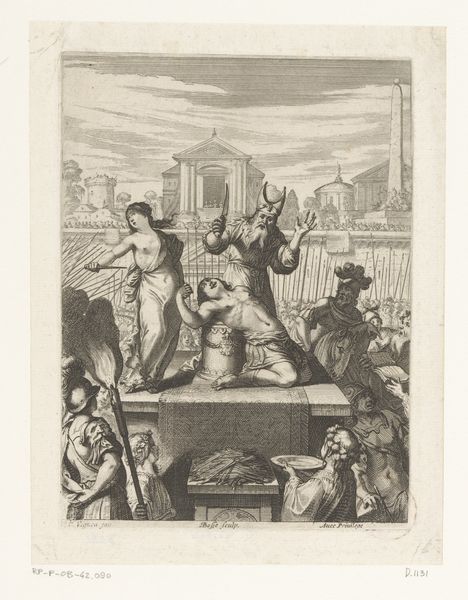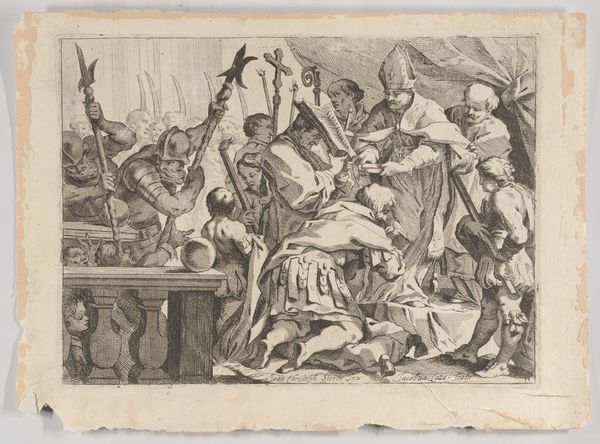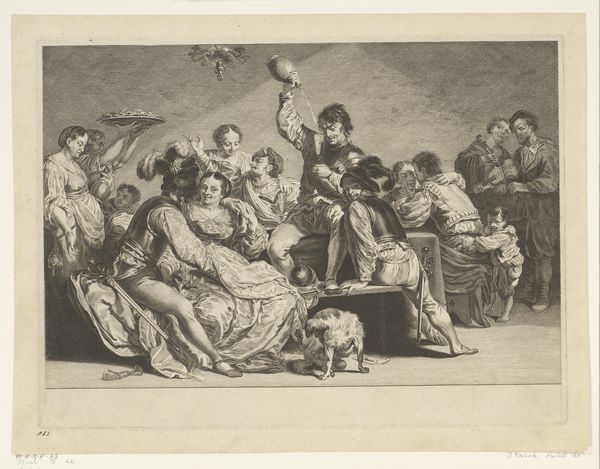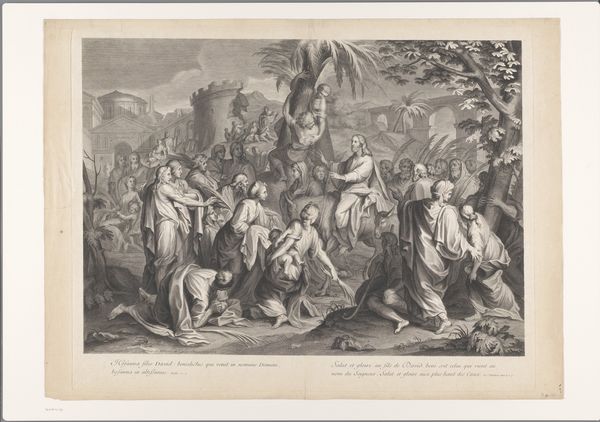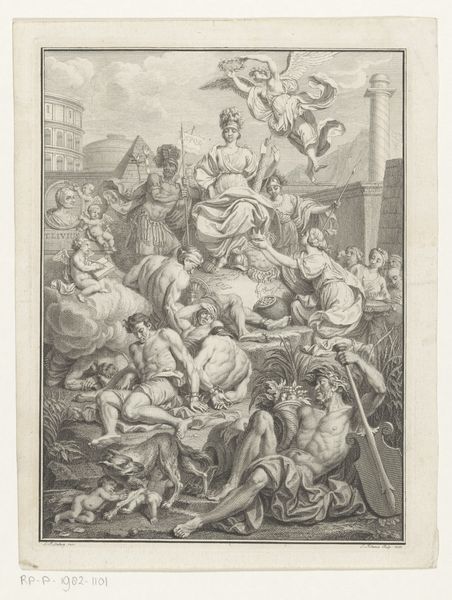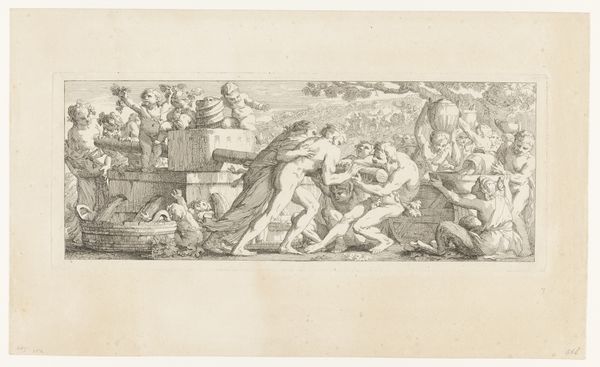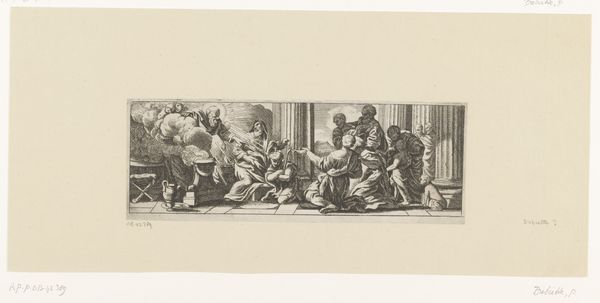
print, engraving
#
narrative-art
#
baroque
# print
#
landscape
#
caricature
#
figuration
#
history-painting
#
engraving
Dimensions: height 381 mm, width 463 mm
Copyright: Rijks Museum: Open Domain
Editor: This is "Bekering van Paulus," or "Conversion of Paul," an engraving by Louis de Châtillon, sometime between 1649 and 1710. The scene is chaotic – figures on horseback, one man prone on the ground, and a flash of light breaking through the clouds. How do you interpret this work within its historical context? Curator: This engraving powerfully illustrates the biblical story of Paul's conversion, but it also speaks to the socio-political upheavals of the 17th century. The dramatic Baroque style emphasizes the sudden disruption and divine intervention in Paul's life. Think about the power structures at play: Paul, initially a persecutor of Christians, is confronted and transformed. Does this resonate with contemporary dialogues about power, oppression, and radical change? Editor: It definitely does. I see echoes of transformative moments in social justice movements. Is there something inherently political in depicting a moment of radical shift? Curator: Absolutely. The image isn't just a religious narrative; it becomes a visual argument for the possibility of transformation, even for those who seem entrenched in oppressive systems. Consider how religious narratives, particularly those depicting conversion and revelation, served as both justifications for authority and blueprints for resistance throughout history. Editor: So, this conversion story could be seen as subversive, a subtle call for dismantling existing hierarchies? Curator: Precisely. By emphasizing the individual’s transformative experience, the engraving potentially challenges established power dynamics. Does the depiction of the fallen Paul invite empathy, challenging the viewer's own biases and preconceived notions about who is worthy of redemption? Editor: I never thought of it that way. Seeing it through that lens really changes my perspective. It’s more than just a religious scene; it's a powerful social commentary. Curator: Exactly. Art, even when seemingly religious, can be deeply intertwined with the politics and social dynamics of its time. Editor: Thanks. I'll be thinking about this engraving and others differently moving forward.
Comments
No comments
Be the first to comment and join the conversation on the ultimate creative platform.
